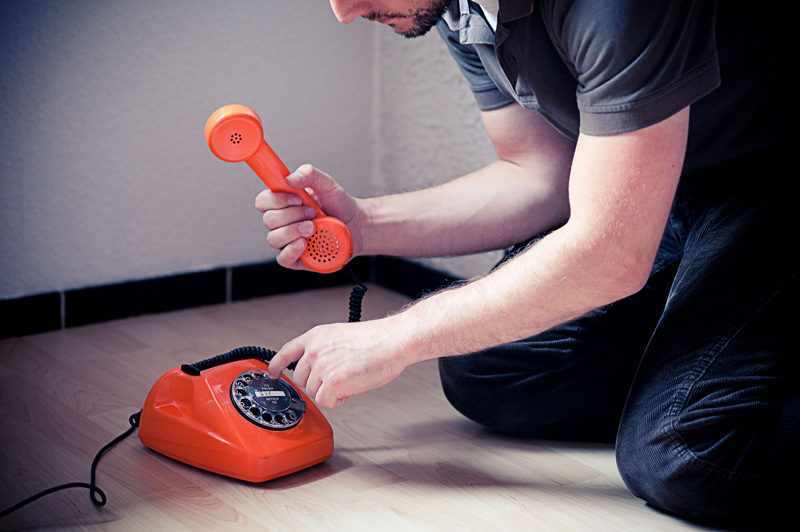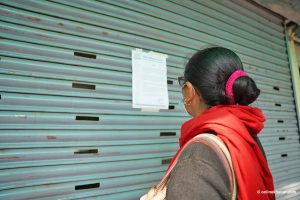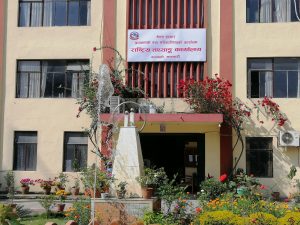On the third day of the home isolation, Hari woke up with the first chirping of birds and the cool morning breeze. But, despite that heavenly environment, he found himself gasping for air, as though he was breathing only through a thin straw, even while he conjured up the whole strength by opening his mouth and flaring the nose. It was different than usual, so he went inside the room and sat still for what felt like an eternity.
After feeling a little better, he dialled a number. Hari described everything to the person at the other end. The voice reassured Hari and stressed the importance of going to a hospital, stating it a likely emergency. Hari denied the advice saying he was absolutely fine before and after this morning episode of breathlessness. But, the person at the other end insisted on and instead offered to provide information about the ambulance service for Covid-19 patients in his rural municipality.
The voice at the other end was Srijana. As soon as she cut the call, she said to herself, “This is happy hypoxia.” She knew that it is a silent condition common among Covid-19 patients when one can function normally even when the blood oxygen level is critically low, as low as 40% (the normal is 95% or higher) and she reminded herself this defying of the normal biology by Covid-19 is the possible reason that the patients tend to visit hospitals at a critically low level of blood oxygen level.
Srijana and some other nurses like hers are a part of “special force nurses” that has been providing telemedicine services during the time of the Covid-19 crisis. This group’s experience shows rays of hope in the possibility of remote care for patients via telemedicine.
A case in point

They are a group of nurses from every province of Nepal who have come together to serve the nation remotely (using telecommunication means). In total, this team has seven local coordinators and seven counsellors (who are well versed with major local languages). The coordinators are responsible for reaching out to local media and digital platforms to raise mass awareness about the disease. Since its official launch on May 9, 2021, the counsellors are providing 24-hour telephonic counselling to the COVID-19 patients. They are using technology to provide one of the most important nursing services, i.e. “patient education”.
Such interventions have reached more than 700 patients to date and along with the follow-up cases, around 900 cases have benefitted from these online counselling services. Additionally, they are also trying to break the chain of infection at the community level by providing orientation to different organisations such as Kadam Nepal, and youth networks such as YOSHAN to prevent infection and ensuring proper care during home isolation. The contributions of the special force nurses have also expanded to advocating for and facilitating stress management sessions reaching more than 147 frontline health workers engaged at five health facilities. Additionally, they have trained 1,200 health workers through 15 online vaccination training sessions with many national and international supports.
The Nepal government, the scientific community, nursing bodies and the media have welcomed this initiative.
During and beyond Covid-19

Telenursing is a component of a broader concept called telehealth, which includes telemedicine, and telepharmacy etc. The word “tele” has a Greek origin meaning “far off”, so telenursing means providing nursing services or facilitating communication among healthcare providers even when separated by a distance. This type of nursing service provided via telephone or the internet is gaining popularity especially during this pandemic as people want to limit the spread of the disease by physically distancing, quarantining wherever applicable, and preserving the limited hospital resources by treating the patients with mild symptoms at home.
There are two logics why we can say telenursing is applicable to service providers and service recipients beyond Covid-19. Firstly, our country has an estimated population of 28.6 million and as of mid-January 2021 report published by Nepal Telecommunications Authority, there are more than 38.21 million Nepali people with mobile connections, which is 34.64 per cent higher than the total population of the country (reason: a user owns more than one sim of the same or different service providers). This very fact depicts if the likes of “Special Force Nurse” continue beyond Covid-19, we can reach almost all Nepali citizens with the primary nursing services (at least via mobile phones) as the first point of contact when people need immediate medical services. Most importantly, these remote services can ensure the mobilisation of local language-speaking nurses, thus promoting culturally and linguistically congruent nursing care.
Secondly, our country has around 67 doctors and nurses per 100,000 population, while the WHO recommends 230 of them for that size of population (ILO, 2017). This shortage of skilled human resources is more prevalent in rural areas. Thus, when a primary caregiver like nurses can prioritise if the patient’s medical needs are that of health education and counselling or a visit to a specialised clinic, this serves the strained health system (service provider) and in part reduces the out-of-pocket spending of the patients (service recipients) by choosing the right and optimum modality of medical care by patients for themselves. Also, this instant and real-time nursing service can (in part) compensate our poor health-seeking behaviours by ensuring early diagnosis and treatment (before it is too late!).
Should we welcome a remote health service?

If one day you wake up, it is a cold winter morning and while exiting your home, you start sneezing, you take a couple of steps, the sneeze does not stop, it makes you tearful and your nose running. After 15 minutes, you finally give up and decide to go back home, with great effort, you dial a number and explain your symptoms. The nurse at the other end sounds concerned; she listens to your symptoms and asks about the difficulty in breathing, or swollen eyelids or tongue. Having ruled out all other complications, she counsels you to be conscious of chill mornings and consult a doctor if this persists or visit an emergency ward if the future allergies are associated with shortness of breath, and swollen tongues.
Unmistakably, remote care (telenursing in this case) is all about bringing expertise to you, instead of us hovering through the hospital corridors or waiting for the appointments.
While one ponders about the novelty of ‘tele’ practices, there can be questions about the practicalities and readiness of the service providers and recipients, which is yet another mammoth of a topic open to discussions and explanations, which we may cover in subsequent articles.
In a nutshell, as the WHO prioritises universal health coverage to ensure the accessibility of health services to all people, whenever they need it or wherever they are without suffering the financial brunt of paying for the services, remote healthcare such as telenursing has its undeniable implications. And, in Nepal particularly, if we embrace this novel drive, we will be able to bridge many medical gaps, and one among them is the compensation for the low healthcare provider to population ratio. Hence, if we allow this remote service to evolve, it might as well help us realise one of the fundamental rights that our Nepali constitution has established “Every citizen shall have equal access to health services” a little sooner in our lifetime!
Pun is a registered nurse in Nepal and a freelance writer and health researcher. Sapkota is a youth health advocate and recently honoured by Women on Global Health in collaboration with the WHO, UNFPA, ICM, ICN and Nursing Now. At present, she is working as the national coordinator of Special Force Nurses for Covid-19.

























